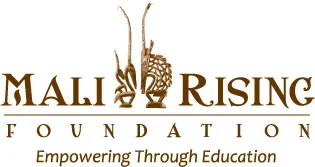By Merritt Frey, Executive Director
“Overall, participating teachers displayed a 13% increase in key skills evaluated by our experts.”
Over the last several years, we've begun investing in our teachers. Why, you ask? Well, fundamentally teachers are what make a school a school...rather than a pole barn filled with screaming teenagers. A more nuanced answer though is that we had seen how little training and support were offered to our teachers, and how isolated they were in our small villages.
One way we are supporting our teachers is through an annual 5-day professional training. Because of a teacher shortage in Mali, some teachers have little to no training or real-world experience before they are sent out to sink-or-swim in a remote village school. And even among the well-trained and long-serving teachers, we found few had received any kind of continuing education -- one teacher told us he had taught for 12 years with zero additional support.
So, our teacher training was born. We wrote more about the content of the training in this blog post and shared lots of photos from it in this post.
This month, we've been evaluating the success of the March 2017 training. We had the participants evaluate the training, and they rated it very high in terms of content and usefulness in their classroom.
But the proof is in the pudding -- or in this case in the classroom. That's why we had Mali-based teaching experts evaluate a sample of participating teachers pre- and post-training. We've crunched the numbers from a sample of a bit more than 10% of the participants, and this is have we learned:
- Overall, participating teachers displayed a 13% increase in key skills evaluated by our experts.
- Individually, the teachers' skills improved anywhere from 2 to 33%, with one teacher actually demonstrating an 8% decline in their skill ratings.
- Some of the largest increases were in skills we particularly targeted in the training based on the pre-training evaluation weaknesses observed:
- 25 percent improvement: Does the teacher evaluate if the students understood the previous lesson?
- 31 percent improvement: Does the teacher encourage interaction between the students and the teacher?
- 25 percent improvement: Does the teacher reinforce positive responses from students?
- 50 percent improvement: Does the teacher organize the students into small groups for work? (one measure of active learning strategy implementation)
- Not everything was perfect though! The evaluations showed we still have work to do on topics such as ensuring instructions given to students are clear and concise, helping teachers evaluate if students are understanding the lesson, and setting students at ease and providing them with the confidence to speak up.
Investing in our teachers is a long-term strategy, and the annual training is just one piece of the puzzle. (Read this blog post for a peek at a new tactic we'll be expanding next year.) Thanks to our donors, we'll learn from this training and move into next school year's training with an even better plan for helping our teachers help our students!
Three of our teachers hard at work during the March 2017 teacher training.


